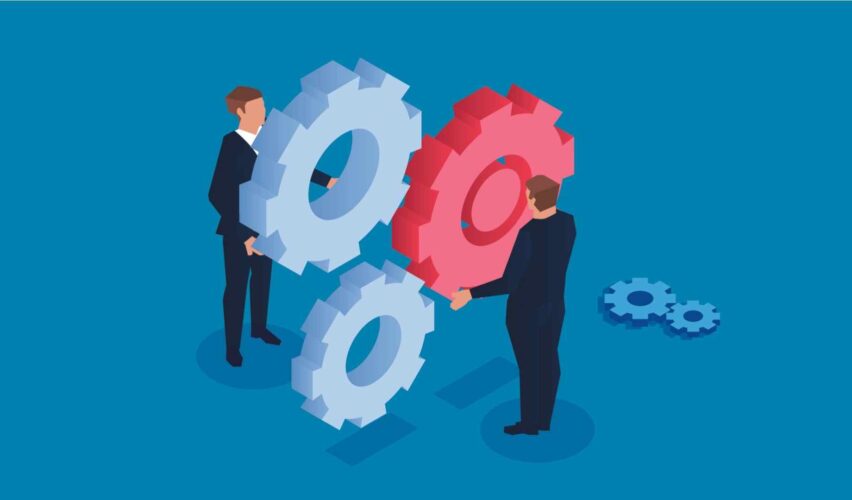One of the key findings in our initial report from a study into the impact of the pandemic was that despite all of the challenges that the field service sector has faced in the last twelve months there remained a positive outlook on the future and even more surprisingly was that it was the SMB sector that showed more optimism than their colleagues in enterprise.
A few months on as we conducted our interviews and the pandemic continued to drag on, had that hope diminished at all?
Having undertaken an extensive research project with FieldAware in the latter months of 2020 we released a ground-breaking report that identified the emerging trends of the new normal. Having assessed the sectors opinions at the time we then returned to interview a selection of the respondents to go Beyond the Data and leverage deeper insight.
The following article is an excerpt from a report based upon those interviews as well as our exclusive debrief session.
One of the original report areas that was quite interesting was that there seemed to be a significant difference between how those in smaller organizations saw the pandemic’s impact compared to their peers in larger enterprise organizations.
Of course, it is a fair assertion that the smaller companies have been hit harder, primarily because they simply do not have the deep cash reserves that those in the enterprise have.
As one of our respondents, a Service Director for a UK based SMB in the engineering sector, commented “It’s been hard especially in the first instance, where it was just like someone turning the tap off on where our revenue streams. As we adjusted and as regulations became clearer and better defined, we were able to adapt but effectively we are looking at a period of around two almost three months where revenue took a massive, massive hit for us.”
The other issue that impacts smaller businesses disproportionally compared to their larger counterparts is the increased delay in cash-to-service cycles.
“The smaller companies are much more agile in the way that they’re in control of their business and they can adapt their service business, they can implement new services, and adapt their model much quicker…”
In fact, in our initial study, we saw that over half of field service companies were having issues with customers being unable to pay for services delivered because of restricted cashflows.
“For us, while there was a significant loss of revenue, that I think all companies faced during the pandemic, the biggest challenge was the lack of cash in the market to get paid for the work that we had actually done,” commented another respondent, a Customer Service Director in the construction space working out of the US.
“What really hurt us was much bigger companies than ourselves dragging their feet when it came to paying their bills. Fortunately, most of our suppliers were understanding and gave us the space to manoeuvre but the service-to-cash cycle slowing down was an additional headache when we really didn’t need it to be honest.”
However, while the pandemic’s impact across the last twelve months undoubtedly hit smaller businesses harder than it hit the enterprise, in our initial study, there was a hugely interesting piece of data that almost seemed paradoxical on the surface.
When it came to how long the pandemic’s impact would continue to effect businesses in the field service sector, amongst those respondents working for smaller companies, there was generally more optimism.
At the time of the study, almost half of respondents from small companies felt that the cashflow challenges would last for around 90 days.
With the gap in between the initial study and the follow-up interviews being sufficient to measure the pandemic’s impact further, it is interesting to reflect on some of the additional comments from our interviewees from the SMB sector.
“To a degree, I think that none of us really judged the magnitude of the pandemic and it has hit us harder and for longer than many might have first guessed,” commented one respondent, a service manager for a third-party service provider in the electrical space.
While this is true, generally the responses across our series of follow up interviews reflect a sustained mood of adaptation and optimism. As one respondent, a CEO of a Finnish manufacturer provider explained, “we’ve just had to adapt, and that has been across all aspects of the business, including financial planning. We have put in place additional enticements to encourage companies to pay sooner but also understand that a lot of our customers are also in challenging positions.”
“When you’re talking about thousands of engineers and technicians, it is a herculean task and achieving everything in the time-frame we did meant that we knew we would not get everything right straight out of the box. The technology, and getting that in place, in essence was the easier part of the equation…”
Steve Mason, COO, FieldAware believes that it is the agility of small businesses that leads to a more positive view of how quickly recovery may arrive.
Speaking on the debrief session analyzing the findings within this study, Mason commented; “I think there is a degree of economics that’s going on. The smaller companies are much more agile in the way that they’re in control of their business. They can adapt their service offering, implement new services, and alter their model much quicker,” Mason explained.
“Larger organizations have a whole set of processes and organizational structures in place that take time to move and adjust. Also, their cost models are very different. So, when they’re looking ahead and looking at how they’re going to sustain their costs and their service quality, it all takes time to work through over an extended period with their existing infrastructure.
“For smaller organizations, their leadership is much closer to their customer base. They can make those adjustments much faster, which means that when they look at their technology, it’s easier for them to adapt to new processes and meet customer needs.
“Within a larger organization with hundreds or 1000s of technicians, it takes time to make those adjustments and formalize them so that they can be consistently executed. I think that has a lot to do with how those organizations viewed the future and why one group was being slightly more optimistic and the other being more cautious in their approach to their strategy.
“When we’re engaging with our customers, we’re seeing them needing advice on how to adapt to their optimization, adapt their processes, so that they can meet the new models and get those implemented much quicker.
“The speed of response is much faster for small organizations than it is for larger ones.”
Mason’s point was illustrated perfectly by one respondent who had global responsibility for the service operation of a major IT and Network Infrastructure organization.
“The speed at which we were able to implement a roll-out for remote working solutions for both our contact centre and field-based staff was quite frankly undertaken at warp speed,” they commented before going on to explain further
“when you’re talking about thousands of engineers and technicians, it is a herculean task and achieving everything in the time-frame we did meant that we knew we would not get everything right straight out of the box. The technology, and getting that in place, in essence was the easier part of the equation.
“Establishing new processes and workflows for a consistent level of service operation will take a lot longer, and it will take time for these things to be optimized, all though once it is done, it will become firmly embedded in how we work in the future.”














